
by Web Editor | Jun 24, 2015 | Update
The best attendance since 2007 turned out for the Composite Panel Assn. annual spring meeting held May 31-June 2 at the Hyatt Regency Coconut Point Resort at Bonita Springs, Fla.
The North America MDF, particleboard and hardboard industries are striving to bring annual shipments closer to capacity, the latter of which was 8.654MMSF as of the beginning of this year, representing 35 particleboard mills, 22 MDF plants, and eight hardboard and engineered wood siding plants. However, it was noted that three new MDF plants (Masisa, Duraplay de Parral and Pro MDF) will go live in Mexico in the next 18 months
Economist Dr. Bill Conerly led off the keynote session addressing The Economic Outlook for Building Materials: New Opportunities and Risks in the Evolving Business Cycle. It won’t be a boom, Conerly said of the economy in the next two years, but it will get better, pointing to U.S. real GDP growth of about 3% in 2016 from its current level of less than 2.5%.
Conerly said housing starts should increase to 1.2 million in 2016, before higher interest rates stall the growth, at which time a surge in remodeling business will surface.
He said higher interest rates stem from the Federal Reserve Board’s concern over inflation, and rates could increase 1.5% per year, possibly beginning this September depending on the strength of the economic data at that time. If the data shows a weakening, however, the Fed will wait. He said the Fed must worry about raising rates too soon, possibly sending the economy into a mild recession, or waiting too long to raise rates, which could cause a more severe recession in 2018-2019.
Conerly said a recent Wall Street Journal survey indicated that the risk of recession is at 12%.
CPA continues to address woody biomass chain of supply and the dynamics of the new generation of wood energy pellet and biomass power plants. Biomass Carbon Neutrality was the subject of a panel discussion moderated by Kelly Shotbolt, president of Arauco North America. CPA especially has an issue with subsidies that encourage the direct burning of woody feedstock. And while the burning results in released carbon, the use of wood products as a building material is storing carbon. The composite panel industry has been very aggressive in challenging biomass proposals and policy that tend to distort the traditional raw material supply chain..
Shotbolt noted that “Circumstances are getting more intense as global governments find ways to reduce the greenhouse footprint. We’re not naive to the fact that wood will be part of the green energy solution. We’re aware of the benefits. We’re a long-standing industry. Our products sequester carbon. As governments intervene we will advocate the expansion of biomass supply.”
The panel included Jim Bowyer of Dovetail Partners; Dave Tenny, president/CEO of National Alliance of Forest Owners; Pete Madden, president/CEO of Drax Biomass; and Laszlo Dory, chairman European Panel Federation.
Madden noted that the Drax power station in North Yorkshire England provides about 7-8% of UK electricity with six turbines, each generating more than 600 MW. He said the company has answered UK directives and incentive for renewable energy by convering two of those turbines from coal to biomass, and a third one is in process, which combined would enable Drax to deliver CO2 reductions of 12 million tonnes per year.
He reviewed the ongoing commissionings of new, 450,000 ton per year wood pellet plants in Gloster, Miss. and Morehouse Parish, La., along with an industrial wood pellet port facility at Baton Rouge, all of which represent a $350 million investment.
Madden said the two pellet plants will each require 1 million tons of fiber per year, 80% of which will be forest residuals (first thinnings) and 20% harvest residuals (slash). Each plant will receive 150 inbounds trucks per day delivering 3,900 tons of raw feedstock. The Mississippi plant will move 50 outbound trucks per day to the port, delivering 1,250 tons. The Louisiana plant will move an 80 car unit train (Union Pacific rail) per week 235 miles delivering 7,200 tons.
Why build the plants in the U.S. South? Madden asked. He pointed to the obvious abundance of fiber and also emphasized that Drax targeted areas where there has been forest products operation closures. He noted that closed pulp/paper and OSB facilities in the Southern U.S. represents more than 28 million green tons of reduced demand for roundwood and chips, while operating and announced (and likely to happen) wood pellet facility demand will be 26 million green tons.
Madden also pointed to the Drax commitment to sustainability, including forest operations auditing as well as performance standards with regard to carbon stock, life cycle greenhouse gas savings and biodiversity protection.
Madden said the size of the wood pellet market on a global scale has been overstated. “There’s not going to be hundreds of pellet mills in the South,” he said. He noted, according to forecasts, that EU demand for wood pellets may double by the end of the decade toward 25 million metric tons but then will most likely plateau.
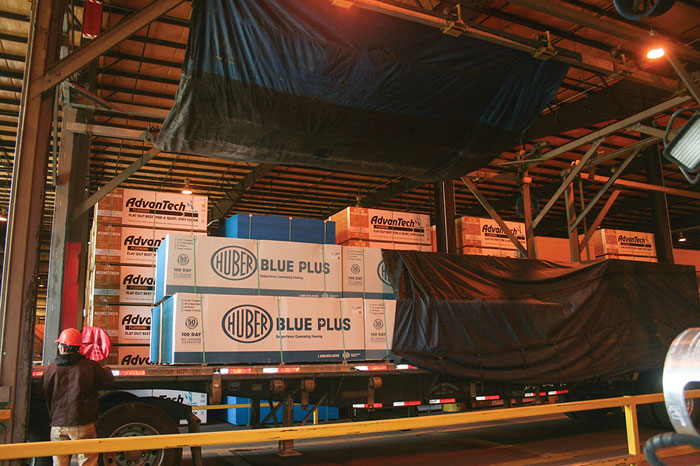
by Web Editor | Feb 16, 2015 | Update
Structural Panel Production Rose
North American structural panel production increased 2.6% to 30.68 billion SF in 2014 compared to 2013.
OSB production was up 6% to 19.88 billion SF, with U.S. production increasing 4.1% to 13.008 billion SF and Canadian production increasing 9.7% to 6.877 billion SF.
Plywood production was down 3.1% to 10.795 billion SF, with U.S. output falling off 3.9% to 8.985 billion SF while Canadian production increased 1% to 1.810 billion SF.
North American glulam production was up 1.4% to 254.8 million board feet. I-joist production was up 7.4% to 672.2 million linear feet, and LVL production increased 11.7% to 63.9 million cubic feet.
U.S. plywood exports to Mexico and the offshore markets totaled 358MMSF, down 15% from 2013, including a 33% decline in exports to China.
U.S. plywood imports from offshore totaled 424MMSF, up 3.2%, while Canadian plywood imports from non-U.S. sources were 50MMSF, up 22%.
The monthly Panel World Industry Newsletter reaches over 3,000 who represent primary panel production operations.
Panel World is delivered six times per year to North American and international professionals, who represent primary panel production operations. Subscriptions are FREE to qualified individuals.
Complete the online form so we can direct you to the appropriate Sales Representative. Contact us today!
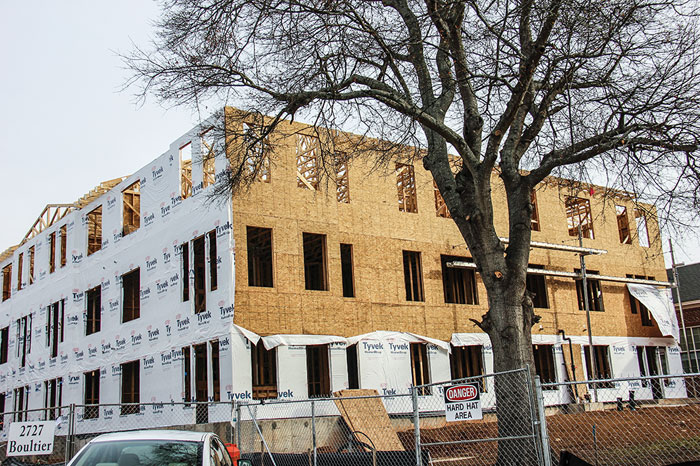
by Web Editor | Feb 13, 2015 | Update
U.S. housing starts in 2014 totaled 1,005,800 million units, up 9% from 2013, marking the first time housing starts have surpassed 1 million since 2007 when starts exceeded 1.4 million units, according to a report by APA—The Engineered Wood Assn. Beginning with 2008 and running through 2014, housing starts averaged 776,000 units per year.
Single family starts in 2014 were 648,000, up 4.9% from 2013, while multifamily starts came in at 357,800 units, up 16.4% from 2013.
Regionally, housing starts in the Northeast were 110,700, up 14.3% from 2013; in the Midwest were 162,800, up 8.8%; in the South were 497,700, up 7.4%; and in the West were 234,600, up 9.2% from 2013.
Actual number of new homes sold in the U.S. were up 1% to 433,000. The median price of new homes sold in 2014 was $279,500, up 4% from 2013.
The number of new homes (inventory) either completed or under construction was 178,000 late in 2014, compared for example to 420,000 in 2008.
Sustained increases in home values drove down the share of homeowners that are in a negative equity position on their mortgage to 16.9%. About half of those who are underwater owe at least 20% more on their mortgage than the current estimated value of their home.
Early this year the rate on a 30-year fixed rate mortgage fell below 3.7%; at that rate, the monthly payment on a $200,000 mortgage is about $100 less than in January 2014 when the mortgage rate was 4.5%.
For the year, the number of homeowners that started the foreclosure process totaled 1.2 million, down 18% from 2013 and down 61% from the peak of 2.87 million reached in 2010.
APA notes that the U.S. economy entered 2015 with considerable momentum. The mix of healthy job gains and gas prices below $2/gallon throughout much of the nation has driven consumer confidence to the highest levels since the middle of the previous decade.
APA forecasts 1,210,000 housing starts in the U.S. in 2015 and 1,365,000 in 2016. The APA report also lists forecasts from six other banking and housing concerns, which range from 1.1 million to 1.3 million for 2015 and 1.28 million to 1.65 million for 2016.
Housing starts in Canada in 2014 were 189,400, a gain of 0.7% from 2013.
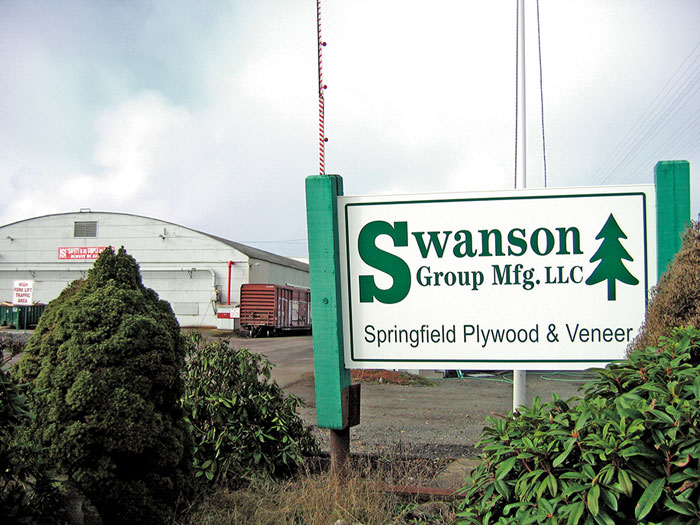
by Web Editor | Feb 13, 2015 | News, Update
Swanson Will Rebuild Springfield Plywood Mill
Officials with Swanson Group Mfg. LLC announced plans in January 2015 to rebuild the company’s Springfield, Ore. plywood plant that was destroyed by fire in mid-July 2014. According to Swanson Group President and CEO Steve Swanson, “We are excited about this opportunity. Springfield is well positioned in terms of log supply and workforce, which make our site an attractive place to recapitalize.”
Plans are to have the new mill finished and ready to start up by mid 2016. The new plant will employ 190 and operate similar to the old facility in terms of capacity and product lines, with a few twists.
According to Swanson, approval for the new building was in mid February. Most of the equipment purchases will take place between now and May, and the new building is expected to be complete and ready by fall 2015.
While Swanson personnel are still looking at equipment types and suppliers and combinations of new and used equipment, Swanson says the mill will utilize a state-of-the-art triple-spindle peeling system with sheet and random stacking; two dryers, one handling wides and the other randoms, feeding to respective stacking systems; and a layup line and related systems that enable more overlay production.
“We’re going to concentrate on overlays,” Swanson says of the new plant, which will add hardwood plywood production to the former plant’s paper overlay product offerings. The mill will still produce some softwood plywood, but primarily in premium 9-10 ft. sizes, he adds.
When in full operation, the new plant should produce roughly 20MMSF of veneer per month while laying up about 10-12MMSF. Of the remaining output, lower grade material will go to Swanson’s Glendale, Ore. plywood plant for use in sheathing products, and higher grades will be sold to LVL producers in the region.
The hiring process is expected to start late in the first quarter, or early in the second quarter of 2016. “Of our 250 employees displaced by the fire, approximately 43 chose to take positions at our more southern locations, which hasn’t always been easy,” states Chuck Wert, Chief Operating Officer of Swanson Group. “These folks have gone through a lot, and made many personal sacrifices. We greatly appreciate this and are delighted to be able to offer them, as well as many of our other displaced employees, an opportunity to return home.”
The Swanson Group acquired the Springfield plant in 2007 and also operates a plywood plant and sawmill in Glendale and a stud mill in Roseburg, Ore. Including a helicopter division and forest products sales and distribution company, Swanson Group employs more than 630 in western Oregon.
Swanson Group purchased the Springfield site from McKenzie Forest Products in 2007 and proceeded to perform major capital projects on log merchandising, dryer rebuilds, lathe modernization and a new layup line. The mill ran four multi-opening presses and two MDO/HDO presses. It had more than doubled production capacity since Swanson took over. Georgia-Pacific built the mill in 1960.
The monthly Panel World Industry Newsletter reaches over 3,000 who represent primary panel production operations.
Panel World is delivered six times per year to North American and international professionals, who represent primary panel production operations. Subscriptions are FREE to qualified individuals.
Complete the online form so we can direct you to the appropriate Sales Representative. Contact us today!
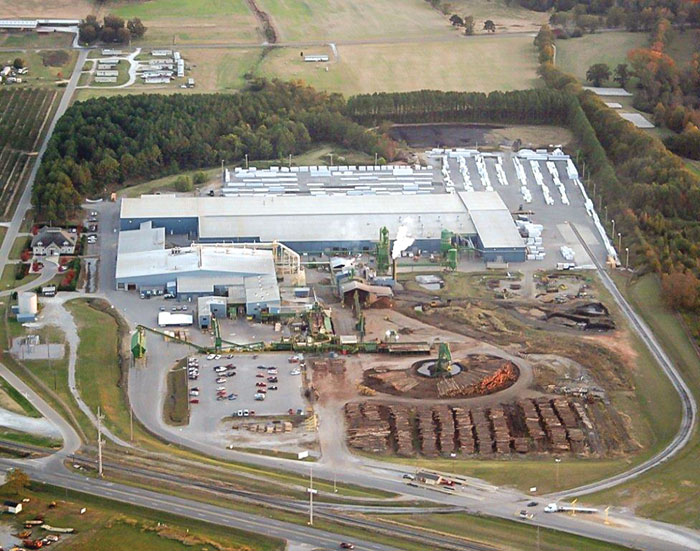
by Web Editor | Dec 18, 2014 | Update
Georgia-Pacific is investing $6 million at its Thorsby, Ala. engineered lumber operations to expand production capacity of laminated veneer lumber (LVL). In a move that positions the facility for long-term success, according to the company, improvements include upgrading the press system’s layup line and veneer sheet feeders, as well as increasing overall veneer dryer capacity and efficiency. Project completion is expected by the second quarter of 2015.
“As the housing market continues a slow but steady improvement, we are investing in our building products division to ensure our ability to meet growing customer needs,” says Paul Watterson, general manager for Georgia-Pacific’s engineered lumber business. “Along with being located within a good wood basin that provides easy access to raw materials, the improvements to our Thorsby operations will increase our ability to supply LVL—a key component for beams and headers in new construction.”
![Roseburg Has Weed Mill On Track]()
by Web Editor | Nov 14, 2014 | Update
Roseburg Has Weed Mill On Track
Roseburg Forest Products announced a phased ramp-up of production at its Weed, Calif. veneer facility beginning October 13. The repairs to the entire mill, which was damaged by the “Boles Fire” on September 15, will likely take until the first quarter of 2015. The fire hit the facility at 1 p.m. All Roseburg employees were evacuated and there were no injuries.
The fire affected the jobs of 135 of the employees at Weed; however, Roseburg was able to quickly keep 90-100 of those employees working during the interim. Between 55 and 60 were relocated to Roseburg, Ore. to continue to help produce veneer at the company’s plywood mills in Dillard, Ore. and Riddle, Ore. Roseburg provided housing for these employees (and their families, in some instances) and assisted them with meals for the duration of their stay in Oregon. Those employees have traveled back to Weed to begin work.
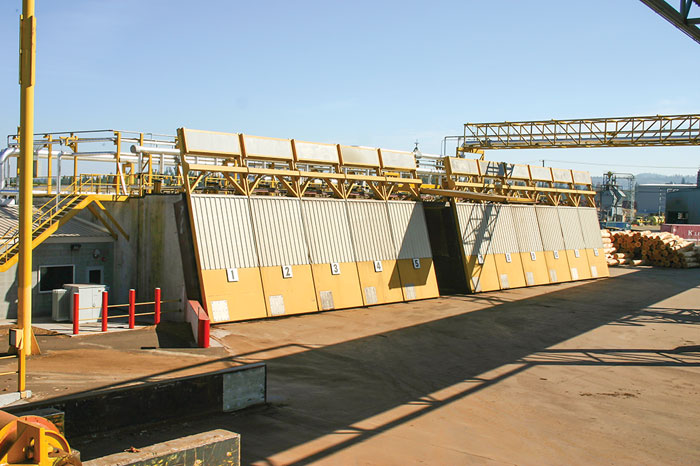
Another 35 employees have been assisting with repairing and rebuilding parts of the Weed facility. In addition, Roseburg has provided temporary housing in the Weed area for 15 employees who lost their homes and everything in them to the fire.
President and CEO Allyn Ford said, “While the fire in Weed was terrible for the community as well as our own employees, I couldn’t be more proud of the teamwork and collaboration of our people. Through the crisis, we’ve discovered some great stories, some great values and some great people. We survived the fire, provided for our affected employees, and repaired the facility enough to get the Weed facility back up and working so that we can help the Weed community recover. I’m proud to be a part of Roseburg Forest Products.”
Roseburg employees have already raised over $51,000 to help those colleagues displaced by the fire. The company has agreed to match those donations dollar for dollar, and a fund has been set up through the United Way in Northern California.
The community in Douglas County (where Roseburg is headquartered) has rallied around the displaced employees as well. O’Toole’s Pub and Treats Café became donation sites for canned foods, bedding, clothes and other necessary items. They then drove their trucks down to Weed to drop off the donated items. Two Shy Brewery, founded by Roseburg citizens, donated 25% of a weekend’s proceeds to the employees in Weed. Brooke Communications in Roseburg held a “Need in Weed” drive at Sherm’s Thunderbird grocery store, where community members donated $2,300 in cash, 1,500 lbs. of food, and 1,300 lbs. of non-food items to the folks in Weed.
“The transition for the employees relocating to Roseburg has been smooth,” says Vice President of Human Resources and Labor Relations Kellye Wise. “These are employees who have an incredible work ethic and just jumped right in to help with production. I am happy we’re able to get them back to their hometown, families and friends as quickly as possible. We are also proud of our Oregon-based employees as we have seen them embrace this temporary transition and work well with the Weed folks.”
Wise also added, “We’ve been down to Weed a number of times to collaborate with community leaders there, and those conversations are ongoing. We have the same goal: To see Weed cleaned up and thriving as soon as possible.”
RELATED ARTICLES
NEW STRATEGIC MARKETING MANAGER FOR ROSEBURG
ROSEBURG GETS CHESTER ROLLING
The monthly Panel World Industry Newsletter reaches over 3,000 who represent primary panel production operations.
Panel World is delivered six times per year to North American and international professionals, who represent primary panel production operations. Subscriptions are FREE to qualified individuals.
Complete the online form so we can direct you to the appropriate Sales Representative. Contact us today!






